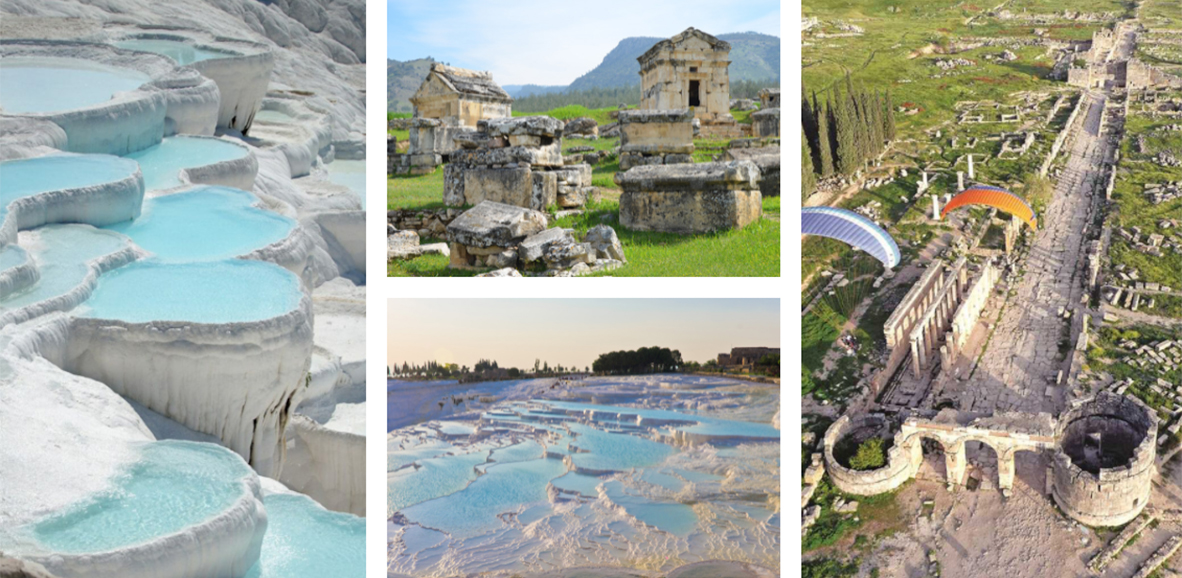The significance of Pamukkale derives from its uniqueness in the context of earth’s natural wonders, such as warm, mineralized water that flows from springs and forms pools and terraces. Hierapolis was founded here, which is a wonderful example of a Graeco-Roman thermal installation. The Christian monuments at this location are excellent examples for early-Christian architecture complexes.
The Turkish name for “cotton castle,” Pamukkale, refers to the mineral deposits produced by hot springs. Mineral forests, petrified waterfalls and terraced pools of a natural nymphaeum are strange forms sculpted by the rich minerals in this ancient location; it’s no surprise that Pamukkale is one of Turkey’s most popular tourist destinations. Pamukkale is 8,860 feet long, 1970 feet wide, and 525 feet high. As a result, it may be viewed for 20 miles away.
Travertine terraces at Pamukkale are made of travertine, a sedimentary rock formed by mineral water from the hot springs. [1] There are 17 hot springs in this location with temperatures ranging from 35 to 100 degrees Celsius (95 to 212 degrees Fahrenheit). The spring’s water is carried 320 meters (1,050 feet) and deposited 36 to 70 meters (120 to 230 feet) down the travertine terraces, forming calcium carbonate over a 24-meter length (79 feet) or 30-meter length (98 feet). When the water, which is supersaturated with calcium carbonate, reaches the surface, CO2 escapes from it and calcium carbonate is deposited. Travertine is formed when calcium carbonate is deposited as a soft gel that later crystallizes.
The water level is not very deep in the terraces, so it is not very possible to swim in it, but you can lie in it if you would like. There is Cleopatra Pool that you can swim with ancient columns next to you with a small fee.
The entrance fee for the Pamukkale Travertine Terraces and Hierapolis Ancient City is 110 Turkish Lira per person until April 2022.
Please click here to get more information about Pamukkale Travertine Terraces.



Comment (0)